by Kevin Cody
[Editor’s Note: Attorney and long time Hermosa Beach resident Robert E. Courtney passed away Sunday, Dec. 1 at age 89. In the following 2007 interview, Coutney talked about the changes in the practice of law over his then four decade long career.]
The defendant had been convicted of rape and murder. The prosecutor was demanding the death penalty.
“He’s an animal,” the prosecutor told the jury while pointing his finger at the defendant. The defendant leapt to his feet, hurled his chair at the bailiff and ran from the courtroom.
The courtroom was over a paint store, down the street from the overcrowded Inglewood Superior Courthouse. The Torrance Courthouse wasn’t yet built.
The defendant almost certainly would have escaped had he taken the first stairway, which led to the street. Instead, he raced down the hall toward the exit through which he had been brought in after having arrived on the jail bus. He smashed down a door blocking his way and stumbled into the judge’s chambers.
“It was a mess. His mother was there and I was afraid the bailiff was going to shoot him. Two jurors and the court reporter fainted,” recalled Bob Courtney, who represented the defendant.
After the defendant was cuffed, the judge recessed court for the day and invited Courtney and the prosecutor across the street for drinks at the Elks club.
“The following day I told the jury, ‘If you don’t think the death penalty is horrendous, take a look at what simply the threat of execution did to my client yesterday. The prosecutor is right. He is an animal. And if you want to turn him into even more of an animal, go ahead, give him the death penalty.’”
The jurors gave the defendant a life sentence.
“There are openings that appear all the time, but you have to be listening. Too many lawyers come into the court with a program and don’t deviate from it,” Courtney said.
The story illustrates Courtney’s widely recognized skill at enlisting jurors’ empathy, and exploiting missteps by the prosecution.
But his argument against the death penalty wasn’t the point of the story.
He told the story to illustrate what he calls the “comity” that existed between prosecutors, defense attorneys and judges when he began the practice of law 46 years ago.
“The relationship between prosecutors and defense attorneys is much more acrimonious today. To me, this is a great loss. I’d rather work out a case in a nice, easy manner with the DA and judge. I’ve found you don’t get many fair dispositions if you adopt an aggressive or hostile manner,” he said.
Courtney sat behind a modest desk with his back to the open ocean. His office on the Redondo Pier is upstairs from Tony’s Fish Market. Current case files filled eight-foot high shelves. A coffee table was a foot deep in discovery he received that morning from the Attorney General’s office in a complex real estate fraud case.
His brag wall is expensively framed charcoal sketches of his four kids — Colleen, a Realtor, attorneys Jake and Mary, and Erin, a playwright and artist. Erin drew the sketches.
Courtney wears thick glasses with black, oversized rims that were fashionable in the ‘70s and a white shirt and tie with a black sweater vest that was fashionable in the ‘50s when he appeared in “Rock Pretty Baby” with Sal Mineo.
He doesn’t have a computer or a Blackberry. Barbara Schaefer, his secretary of 28 years, has a computer in her office, but prefers to work at her IBM Selectric typewriter.
He tracks his court appearances in a worn leather date book. Tuesday showed eight cases in Torrance. Wednesday two cases, one downtown Los Angeles, the other in Beverly Hills. Thursday another case downtown, and one in Pasadena.
Courtney leaves his Hermosa Strand home every weekday morning at 7 a. m. and drives directly to one of Los Angeles County’s 46 scattered courthouses. He returns to the office in the afternoon to meet with clients and prepare for the following day’s court appearances.
“I’m in court every day. I’m more comfortable there than in the office,” he said.
The lawyer’s lawyer
Retired Superior Court Judge Tom Allen, a partner of Courtney’s prior to his 1988 judicial appointment, said, “Any dignitary who gets in trouble – judges, lawyers, elected officials – I’m hesitant to give names, but they go to Bobby.”
Two years ago, the Los Angeles Criminal Courts Bar Association presented Courtney with its Lifetime Achievement Award. But Google “Robert E. Courtney, attorney” and the only hit is his bar listing.
Several years ago California Lawyer magazine was preparing an article titled “Who hotshot lawyers would call if they got into trouble.”
Courtney’s name kept coming up during their research, but no one at the magazine knew anything about him. Reluctantly, he consented to the magazine’s request for an interview. But unlike the other 10 attorneys profiled, he declined to identify a single prominent client.
Explained his longtime friend Tom Girardi, “He handles a tremendous number of high profile cases, but he does it in a fashion that doesn’t get press. Very few lawyers have that ability because we’re all such a bunch of ego maniacs.”
Girardi talked about Courtney by phone from aboard his personal jet during a flight home from New Orleans, where he was working on a lawsuit against Merck, manufacturers of the painkiller Vioxx, which has been implicated in heart attacks. The lead attorney in the Erin Brockovich case is credited with winning over 100 $1 million-plus plaintiffs’ verdicts.
At one time, Courtney and Girardi owned a home together on the 17th hole of the Arnold Palmer course in La Quinta, where Lee Trevino sunk his famous skins game hole-in-one. “Someone in the gallery shouted, ‘Mr. Trevino, it went right in the hole.’ Trevino shouted back, ‘That’s what I was trying to do,’” Courtney recalled.
Gerardi stressed that fear of the limelight is not the reason his former Loyola High schoolmate and golfing partner shuns the press.
“At a party, he’s the first one to make everyone laugh. If I’m in a courthouse where Courtney is giving an opening or closing argument, I’ll rush to his courtroom to watch. He may be better than anyone else in the state at getting into the jury box with the jurors.”
Girardi told California Lawyer, “Courtney should have been a stand-up comedian instead of a lawyer. He is the only lawyer in California who can make a jury laugh while defending an alleged murderer, and there is a difference between a laugh and a snicker.”
Here’s Bubsy
Courtney’s instinct for entertaining earned him an acting contract with Universal Studios while he was still an undergraduate at Loyola University. An agent who saw him in the school’s production of “High Button Shoes” picked the athletic, five-foot-three ham to be the next Mickey Rooney.
But after seeing himself opposite “Rebel Without a Cause” star Sal Mineo in a movie called “Rock Pretty Baby” (Courtney played the short guy in the band playing a big baritone sax) and its sequel “Summer Love,” Courtney decided to apply to Loyola University Law School.
His brief acting career did produce one lifetime residual. Loyola’s sister college Immaculate Heart needed a Rumpelstiltskin for its children’s program the year Courtney performed in “High Button Shoes.” He won the part and also the heart of the play’s choreographer and dancer Dorothy Schaffer. The couple married four years later on New Year’s Eve, 1960.
Courtney was born in Bloomfield, N.J., in 1935 and moved to West Los Angeles in 1948, when he was in the eighth grade. He moved to Hermosa Beach in 1955 while in law school because Loyola’s public relations director offered him a room in his home at 1736 Monterrey. The house became home to the 1736 Family Crisis Center.
Courtney’s roots in Hermosa were secured the day Mayor Boots Thelen, owner of the Mermaid, marched his young scotch drinker and golf partner across the street to the Bank of America and told the manager to give Mr. Courtney as big a line of credit as he needed. Thelen guaranteed it and all Courtney had to do in return was serve on the Parks and Rec commission, where his trial skills would be put to the test.
A Texan who moved to the 1700 block of The Strand appeared before the commission to demand that the sticks blocking his ocean view be removed. He said he moved to the beach because, where he came from, everywhere he looked he saw oil derricks. And now, when he looked out toward the ocean, all he saw was sticks. The sticks were poles for the volleyball courts, which he said were dangerous. He said a volleyball had killed a bicyclist on The Strand.
“I told him I’d been playing volleyball in Hermosa for quite a few years and I’d never heard of a volleyball killing anyone. I consider saving the 17th Street volleyball courts one of my greater achievements,” Courtney said.
Over the next half decade, the Courtney family moved five times, but never out of Hermosa and never more than two blocks from the ocean.
“Bob stayed at the beach because he never wanted to give up his volleyball and surfer friends for his Bel Air Country Club friends. He’s kept them both,” Schaefer said.
Neil Gretsky, a longtime Hermosa volleyball player, recalls telling two visiting volleyball players with high opinions of their abilities to go to 17th Street if they wanted to find a good game. The friends returned to Gretsky’s apartment at the end of day complaining about having been humiliated by “two midgets.” One was named Bubsy, the nickname Courtney’s mother gave him as a child.
Establishment of the 17th Street Labor Day Volley Tournament, with volleyball partners Lee Campbell and Gill Malin, is another of Courtney’s significant contributions to beach culture. The tournament opened with a children’s parade and a Calcutta, where Courtney developed the auctioneering skills that, in later years, he would put to work at more socially redeeming charity auctions.
Until recently, Courtney was the only person to have been on a winning 17th Street tournament team two consecutive years. He now shares that honor with his son Jake, who has assumed his dad’s Calcutta auctioneer role.
In later years, Courtney would apply his athletic (and wagering) skills to the more lawyerly sport of golf. His celebrity-studded “Bubsy Golf Tournament” in Reno raised over $2 million for the Richstone Family Center during the years Dorothy Courtney was the center’s director.
The stag tournament was a spin-off of fellow Bel Air Country Club golfer and race car driver Carol Shelby’s charity tournament for heart research.
“Shelby wanted to stop the tournament, but the guys wanted to keep it going, so we needed a new name and a new charity,” Courtney explained.
Trial by law school
Loyola Law School in the late 1950s consisted of four rooms in an office building at 12th Street and Grand Avenue in downtown Los Angeles. The school had seats for 100 first year students, 65 second year students and 40 third year students.
“There was a lot of pressure for those seats. I graduated with 34 classmates and an ulcer,” Courtney said.
The following year, 1961, he went to work for the Los Angeles District Attorney’s Office because he wanted trial experience. The pay was $550 a month, the same he was paid each week at Universal when he was a Loyola undergraduate. But money wasn’t what he was looking for.
“I tried my first case the day I was sworn in,” he said.
Courtney quickly caught the eye of J. Miller Leavy, whom many regard as the greatest prosecutor in the history of the Los Angeles District Attorney’s Office. Leavy won death sentences against Carl Chessman, Barbara Graham and L. Ewing Scott, all challenging and controversial.
The execution of Chessman, the “Red Light Bandit,” who became a best selling author after his conviction, triggered worldwide protests against capital punishment. Graham was a mother of three, and only the third woman to be executed in California in the 20th century. Scott’s case was the first murder conviction in U.S. history to rely solely on circumstantial evidence. The wife he was accused of murdering disappeared the day before concrete was poured for the columns of the 405 Freeway at Sunset Boulevard, near to the couple’s home. Her body purportedly is interred there to this day.
“During closing arguments,” Courtney recalled, Scott’s attorney told the jury that there was no evidence that his client’s wife was dead. ‘She may have just run off. She may walk in this courtroom door at any moment,’” the defense attorney argued.
“Leavy began his closing argument by pointing to the courtroom door and saying, ‘I don’t know if all you know this, but when defense counsel said his client’s wife might walk in that door at any moment, every head in this courtroom turned to that door, except the defendant’s.’”
Courtney was still a Grade I deputy prosecutor with less than a year’s experience when Leavy assigned him to the Fox Hills Country Club murder-for-hire case.
Courtney’s colleagues warned him that he was too green for the high profile capital case. Leavy reassured him by advising that “a murder case is no different from any other deadly assault case, except you have one fewer witnesses.”
The jury returned a guilty verdict against all four defendants and sentenced the shooter to death after Courtney elicited a confession from him on the stand.
“Thank the Lord the Supreme Court reversed the conviction. I never believed in capital punishment,” Courtney said.
Another of Courtney’s early convictions that was reversed involved two men accused of robbing 15 patrons at the White Elephant bar on Crenshaw Boulevard, near the Hollywood Park Racetrack. The two suspects allegedly hid in the men’s room until after the bar had closed and a private party had begun. Several of the guests had a lot of money from their winnings at the track earlier in the day.
Twelve of the victims identified one of the suspects from mug shots as “Duke,” a red-headed Gardena drug dealer. Eight of the witnesses, after viewing mug shots, identified a big, bald-headed Italian and two-time felon named Victor Ciacanneli as the second suspect.
Based on the eyewitnesses’ testimony, the defendants were convicted on five counts of armed robbery and given consecutive sentences of five years to life for each count.
“Two years later,” Courtney recalled, “after I’ve gone into private practice, I’m in trial when my secretary calls and says there’s a big, bald-headed Italian guy in the office who wants to talk to me. She told him I was gone for the day. He said he’d wait. I tell her to call Lt. Goodyear and have him sit in the waiting room until I get back.
“Governor Pat Brown had pardoned Victor and Duke after Kansas police called Inglewood and said two of their prison inmates had confessed to the White Elephant robbery.
“When I get back to the office, there’s Victor and Lt. Goodyear, who’s in plain clothes.
“I say, ‘Victor, I’m so sorry about what happened. What can I do for you?’ He says he wants to talk to me. I say, ‘Victor, do you remember Lt. Goodyear?’ He says, ‘Sure. He’s been sitting here all afternoon. Were you afraid something might happen?’”
“Victor wanted me to represent him in a lawsuit against the state for false imprisonment. He said, ‘I figure you must be good if you can get an innocent man convicted.’”
Courtney referred him to a civil attorney who won a $10,000 judgment against the state. At the time, inmates were entitled to a maximum of $5,000 for each year they were wrongfully imprisoned, providing they had been gainfully employed prior to their arrest. Ciacanneli had been a house painter.
A few months later “The Duke” appeared at Courtney’s office.
“He also wanted me to represent him. But because his only income prior to his arrest was from drug sales, he didn’t have a case,” Courtney said.
The White Elephant robbery taught Courtney two lessons. The first is the unreliability of eyewitnesses.
“Not a single bar customer said, ‘Nope, these two aren’t the guys,’” Courtney said.
“The worst evidence in court today is eyewitness testimony, with no circumstantial evidence to corroborate it.”
“In 2000, I tried a love triangle murder case. A Mar Vista man was accused of blowing off the head of his girlfriend’s husband with a shotgun. A witness testified that he saw my client run back into his house, where the police found a shotgun. He was a writer and they also found a murder mystery on his computer.
“The shotgun was the wrong gauge, the murder mystery bore no resemblance to the crime and the victim had recently been in a fight with a rival gang member. But the police had their suspect and ended their investigation.
“The first trial ended in a hung jury and by the end of the second trial even the prosecutor began doubting she had the right guy. While the second jury was deliberating, she told me her bosses had agreed to let my client out of jail that day if he’d plead guilty to manslaughter.
“He’d been in jail for two years awaiting trial. I talked to him with his mother and grandmother in the courtroom. I’m begging with the guy to take the plea and get on with his life.
“He says, ‘Mr. Courtney, I didn’t do it. I’m not going to plead.’”
“An hour later the jury returns a not guilty verdict. Those cases are the hardest, the ones where you believe your client is innocent,” Courtney said.
The White Elephant case also taught the young defense attorney the difference between professional criminals and amateurs.
“The best clients a defense attorney can have are the real pros. They put their emotions aside. They don’t want to go to prison. But they don’t lie about what happened and they don’t expect you to create false testimony. All they ask is that you challenge the people’s case as best you can.”
“The worst kind of client is the amateur who most likely is guilty, but says he didn’t do it. They don’t trust their lawyer to do his best if he knows they are guilty. Many times, after the fingerprints and identification reports come back they’ll finally say, ‘I did it.’ Then I can negotiate a plea bargain, or we can go to trial without worrying about a false defense being exposed.”
To illustrate the catastrophic consequences of dishonest amateurs, he cited the 2003 case of American Martyrs School teacher Aran Delaney, who was accused of raping a woman after the two left the North End Bar and Grill in Hermosa.
Prior to the trial, the suspect’s 64-year-old mother and his 67-year-old father drove out from Colorado in a motor home and went to the alleged victim’s Palos Verdes home.
While the father waited with the engine running, the mother knocked on the door and handed the alleged victim a handwritten note that read, “Just say it didn’t happen the way you said it did, and leave it at that.” Then the mother grabbed the note back and handed the alleged victim a second note offering her a $5,000 bribe to drop the charges. Then grabbing that note back, the mother handed the woman a third note that read, “Do not make the mistake of not taking us seriously…The sooner you act, the sooner you will receive this reward.”
The woman slammed the door shut, the third note still in her hands. The panicked mother ran to her husband and the couple sped off, but not before a neighbor copied down their Colorado license plate number.
Courtney became irate with the parents for interfering in the case and they fired him. Fortunately for the son, a public defender won him an acquittal. Tragically for the parents, they were found guilty of obstruction of justice, which carries a mandatory jail sentence.
“The hardest cases, of course, are innocent people accused of a serious crime. In some I’ve won acquittals, in some hung juries, and some have been found guilty and sent to prison, still protesting their innocence. Those cases are a heavy emotional burden for a criminal attorney.
“Many of my friends have quit because of burnout. I’d be lying if I told you I don’t feel it, but I deal with it as well as anyone I know. I tell myself I know what I’m doing and it’s the best that can be done.”
“It’s very exhilarating when you win a case, or get probation and keep someone from going to jail,” he added.
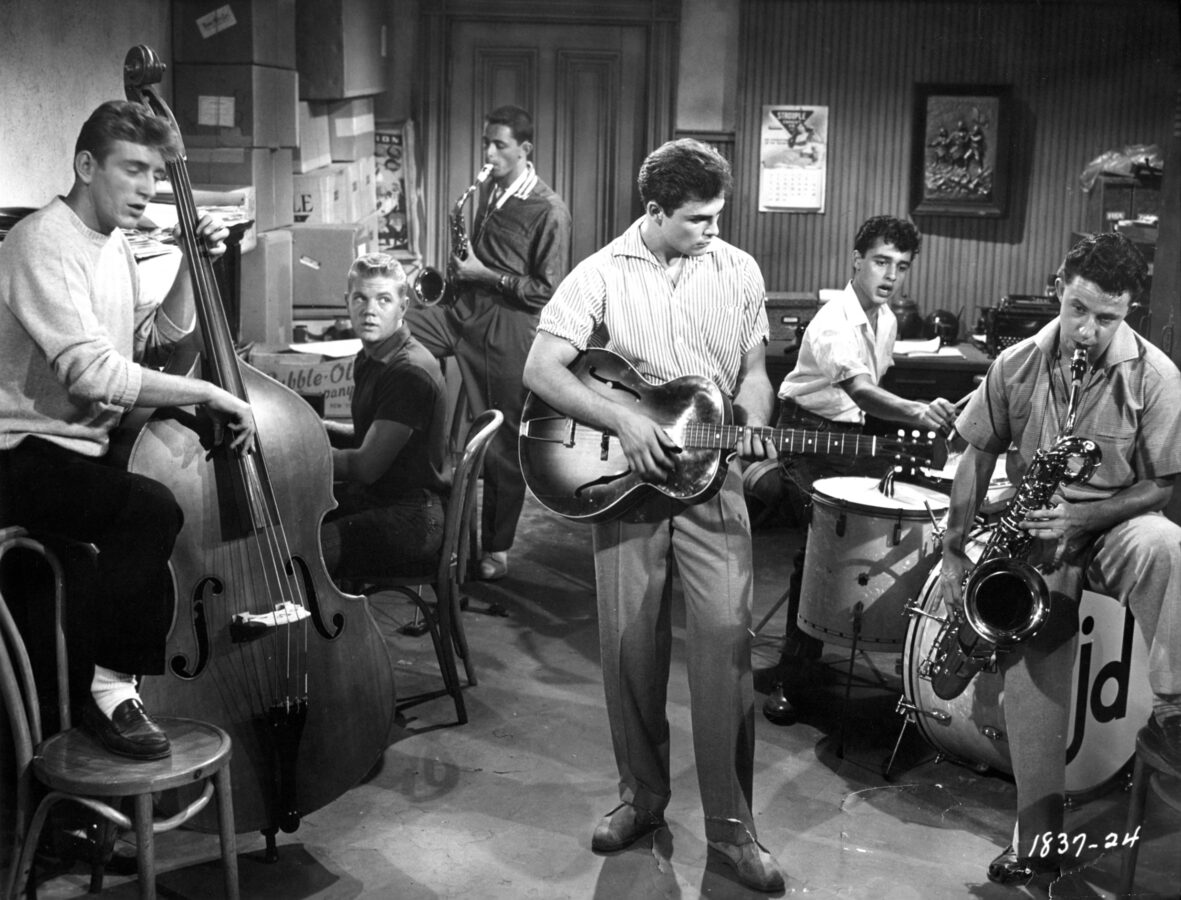
Split personality
Local reporters have long been frustrated by the dichotomous hail-fellow-well-met and the attorney who doesn’t return reporters’ phone calls.
In the late 1970s, an Easy Reader reporter spied Courtney on the second floor of the Torrance courthouse, surrounded by a dozen towering, provocatively dressed women from the Stardust Modeling Studio on Aviation Boulevard in Redondo Beach.
(Hermosa Beach councilman Roger Creighton was one of several South Bay elected officials whose names were found in the studio’s little black book. In an effort to enlist Creighton’s cooperation in the investigation, a DA investigator threatened to disclose Creighton’s sexual proclivities to his wife. The councilman, a six-foot-four heavy equipment operator, who was unmarried, told the investigator, “Please don’t. It would just make him mad.”)
The reporter attempted to follow Courtney into the courtroom, but found the door locked and its window papered over.
At the end of the day, when Courtney and the women emerged, the reporter asked what had happened. Courtney responded with his usual, “No comment.”
“Can you at least explain why the door was locked? What about the defendants’ right to a public trial?” the reporter asked.
“We didn’t want a public trial,” he answered.
Sparing his clients from embarrassment wasn’t the reason. His clients’ reputations were already beyond redemption. The person he was protecting was the judge. He didn’t want the judge’s deliberations affected by concerns about appearing soft on prostitution and subsequently being voted out of office.
Ironically, Laurie Belger, Courtney’s six-foot-four partner of many years, was a favorite of reporters because of his colorful style and more colorful quotes. Belger favored white suits and drove a white Rolls Royce convertible.
“I’ve tried over 20 murder cases in my career, and nobody cared. But you steal this fish, and eat it? I tell you, it was as if he had barbecued Bambi. People want to put him in the gas chamber,” Belger told the Washington Post in 2000, during his defense of a local surfer who speared Big Mama, a 50-pound halibut in the hatchery at the Redondo AES power plant.
“We had different styles,” Courtney said with characteristic understatement in contrasting his and Belger’s relationships with the press.
“Any ruling in favor of a defendant can hurt a judge’s career. The public assumes defendants are guilty and wants them sent to jail. If a judge starts throwing out cases, he’ll be perceived as lenient,” Courtney said.
More recently, Courtney was visited by a prominent Los Angeles educator who had been arrested in a prostitution sting. The case had already hit the newspapers, and the educator had already retained a Century City attorney.
The charge was a “wobbler,” it could be prosecuted as either a misdemeanor or a felony. Despite it being a first time offense, the felony charge carried a mandatory prison sentence because the prostitute was underage.
Courtney told the educator that his Century City attorney was a “fine young man” and to let him know his services were no longer required.
A year passed without a disposition in the case. The worried client had been suspended from work and would be fired if convicted of a felony. One day a mutual friend saw Courtney in his car at a stop sign in Hermosa and asked about the case.
“I’ve got it right here. I’m thinking about our friend every day,” Courtney said, patting the briefcase on the seat of his car.
Another year passed, and finally Courtney called his client with good news. He would have to register as a sex offender, but the prosecutor had agreed to a misdemeanor plea, as he almost certainly would have at the outset had the case not hit the press. The chastened educator returned to work and resumed his promising career.
The negative impact press coverage has on criminal defendants has been compounded by the prosecutorial bent of most judges, which Courtney traces back to the years between 1984 and 1998, when Republican governors Pete Wilson and George Deukmajian were in office.
Preceding their elections, governors typically appointed judges from the ranks of attorneys in private practice. The judges were typically prominent figures in their communities because municipal court judges were required to live in the districts they served.
Judges appointed to the Torrance courthouse shortly after it opened in 1967 included South Bay attorneys who had been in private practice: Bill McFadden, Otto Willet, Bill Keene (of “Divorce Court” fame), Bill Hollingsworth, Mark Wood and Tom Fredricks. Two of the judges’ sons, Willet’s son Bill and Fredrick’s son Josh, would also be appointed to the Torrance bench. Bill Willet was a Torrance city prosecutor prior to his appointment. Josh Fredricks served on the South Bay School board and practiced law out of his father’s former office at Pier and Monterey avenues.
Over time, the comity that existed among South Bay judges and defense attorneys began to irk prosecutors, who suggested justice was being thwarted by an “old boy’s network.”
In the early 1990s, the presiding Los Angeles County Superior Court Judge responded to the complaints by assigning downtown Superior Court Judge Stephen O’Neil to preside over the Torrance courthouse.
“Stephen fit right in. He was a very good judge,” Courtney said.
Judge Tom Allen said the perception of an old boys network was a fiction.
“I didn’t see preference shown to South Bay attorneys, certainly not in my courtroom. It wouldn’t have been right. Nor did I ever hear of Bobby getting preference, though when he walked in a courtroom, you knew he was there. We called him the ‘Little General.’”
(Easy Reader’s publisher recalled receiving a warm welcome from Judge Allen when a landlord dispute involving the newspaper was assigned to his courtroom. The judge’s son, attorney Tom Allen III, was the publisher’s neighbor. But hopes for a sympathetic hearing were dashed when Judge Allen recused himself. The replacement judge ruled against the newspaper.)
Zealotry, Courtney contended, poses a far bigger threat to the courts than cronyism, which went away as an issue when the Los Angeles Municipal and Superior Court systems were merged in 1998.
“It’s not how smart you were in law school. There’s plenty of time during a trial to read up on the law. A good judge is someone who sets a good example, who is even-handed and follows the middle road, who treats the prosecution, the defense, and even the pro per defendant equally,” Courtney said.
Courtney expects the same qualities of opposing counsels. Instead, he sees the courtroom reflecting the coarsening of contemporary culture, where “Urinetown” has displaced “High Button Shoes” in student productions and teens who once flocked to movies like “Rock Pretty Baby” are fed “Reservoir Dogs.”
“I see young lawyers – prosecutors and defense attorneys – coming into the courtroom in their aggressive style, and not being open to differing interpretations of the facts. Maybe a person stumbled out of a car because he was drunk. But couldn’t it be just as reasonably attributed to a hip replacement? Prosecutors want a conviction with the maximum penalty. Public defenders won’t give an inch on motions.
“I just believe you can be civil in the courtroom and still put on your evidence effectively. The lack of civility is very much increased.”
Justice may suffer as a result, but never his clients. He’s too experienced to be intimidated by posturing prosecutors, and if the issue becomes credibility, his is solid.
“He has such a reputation for honesty and integrity that every judge takes into full measure any representation from Bob Courtney,” observed Girardi.
“If I were charged with a crime of passion, I’d call Bob Courtney,” attorney Pierce O’Donnell told California Lawyer magazine. “He’s a phenomenal trial lawyer. He’s got the best empathic skills I’ve ever seen. If you give him even the slightest opening as a prosecutor, he’ll drive a truck through it.”
Courtney characteristically declined to cite a case he won by exploiting a prosecutor’s blinding aggression. But he did recall the tragic consequences of a 2000 case that he lost to an overzealous prosecutor.
The client was a San Fernando Valley woman who shot and killed her husband because he left her for a younger woman. The man and wife were both 65. The home wrecker was 61.
The husband and his girlfriend moved into a house around the corner from the couple’s home, under the noses of their neighbors of many decades.
One afternoon, the wife lured her husband home on the pretext of needing something fixed. She cornered him in the garage and shot him twice before shooting herself three times. He died, she didn’t.
The prosecutor initially wanted the death penalty. When he learned that the case didn’t call for the death penalty, he offered a life sentence without possibility of parole in exchange for a guilty plea.
“That was the worst she could get even if convicted. Why would I plead her to that,” Courtney said. With nothing to lose, and a slim chance that the jury would find his client was not of sound mind because she was taking over 100 prescribed medications, Courtney took the case to trial. It lasted six weeks and ended in a guilty verdict.
“Those cases are hard on an attorney, when you’re not able to do anything for someone. I can’t imagine in the old days, not having been able to work something out with the prosecutor,” Courtney said.
Courtney is 71. He has an artificial hip and a bad back that makes carrying a heavy briefcase from courthouse to courthouse painful. But questions about retirement pain him more.
He responded to the question with the look of an old physician who is asked if he wouldn’t prefer playing golf to saving lives.
“I think I’m still able to help. If I didn’t, I’d quit in a New York second. But I don’t know what I’d do. I enjoy going to trial. It’s the old Mickey and Judy in me. I try to make it interesting for the jurors, to show there are two sides to every act, and that evidence doesn’t always point to guilt,” he said.
He also still enjoys scotch, particularly while watching football with his beach buddies at any of a number of local bars. This past football season, he knew his court appearances wouldn’t leave time for him to fill out a football card every week. So on opening day he filled out cards for the entire season, picking the underdog in every game. He didn’t pick all winners, but at the end of the season he won the pool. ER

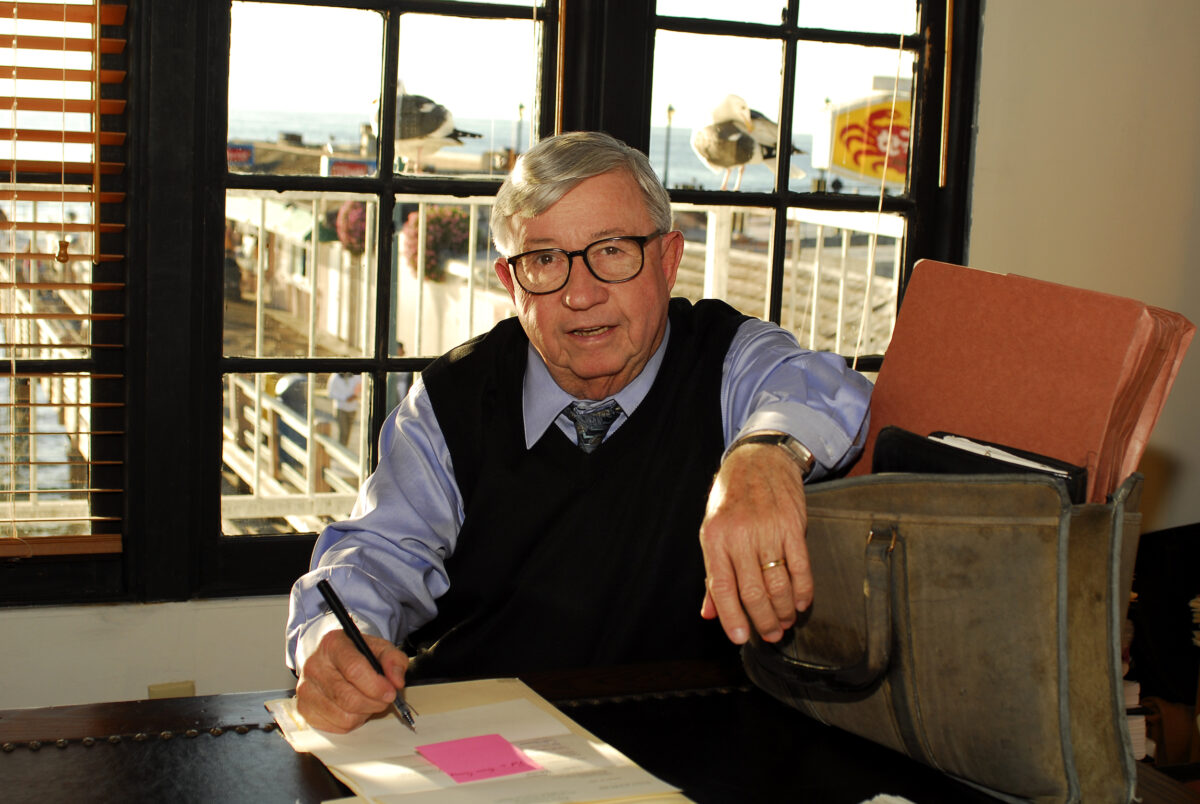
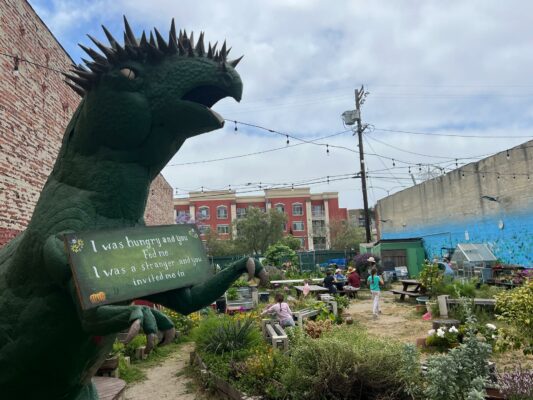
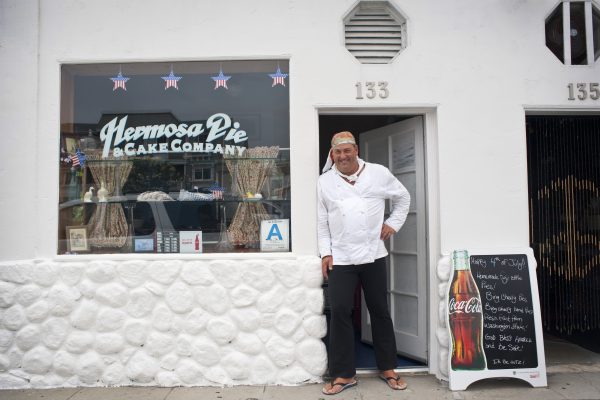
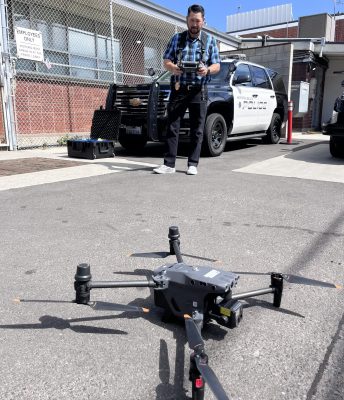
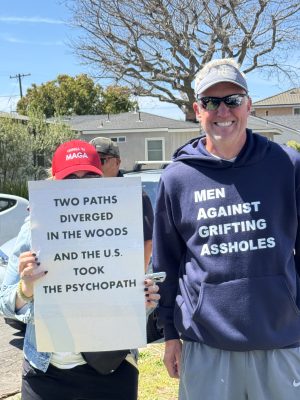
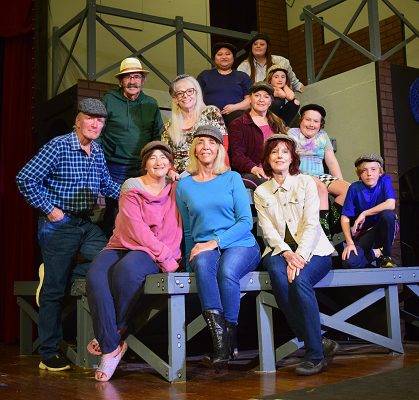
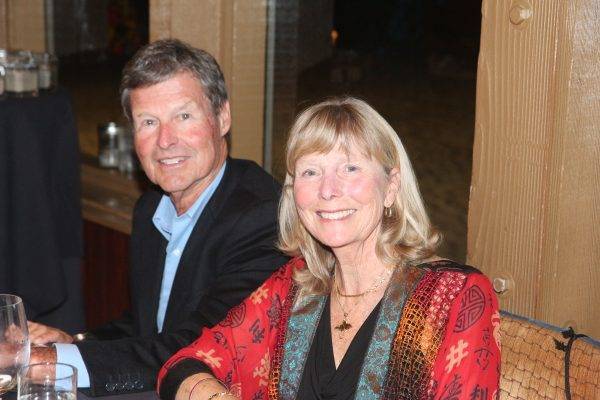

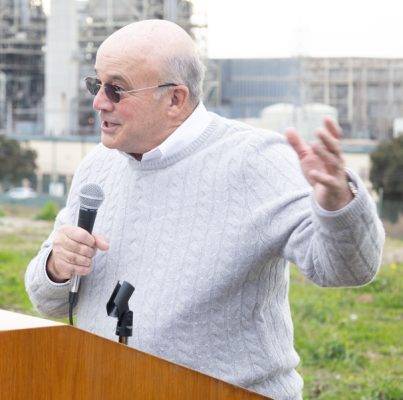

Great article. Thanks for bringing back that interview. Sorry he’s gone.